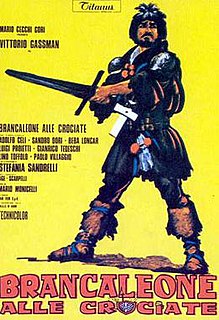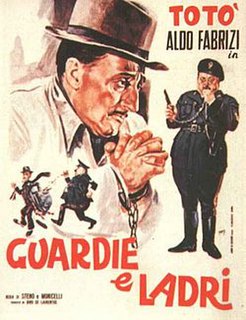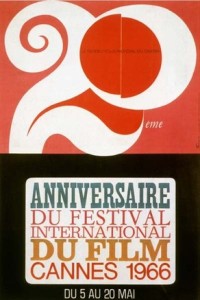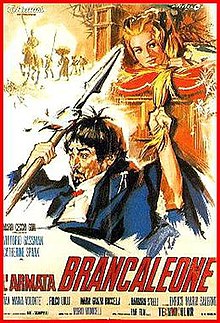
Vittorio Gassman, popularly known as Il Mattatore, was an Italian actor, director and screenwriter.

Mario Alberto Ettore Monicelli was an Italian film director and screenwriter and one of the masters of the Commedia all'Italiana. He was nominated six times for an Oscar, and was awarded the Golden Lion for his career.
Carlo Rustichelli was an Italian film composer whose career spanned the 1940s to about 1990. His prolific output included about 250 film compositions, as well as arrangements for other films, and music for television.

Adolfo Celi was an Italian film actor and director. Born in Curcuraci, Messina, Sicily, Celi appeared in nearly 100 films, specialising in international villains. Although a prominent actor in Italian cinema and famed for many roles, he is best remembered internationally for his portrayal of Emilio Largo in the 1965 James Bond film Thunderball. Celi later spoofed his Thunderball role in the film OK Connery opposite Sean Connery's brother, Neil Connery.
Age & Scarpelli is the stage name used by the pair of Italian screenwriters Agenore Incrocci (1914–2005) and Furio Scarpelli (1919–2010). Together, they wrote the script for about a hundred movies, mainly satirical comedies.

Catherine Spaak was an actress and singer who acted in mostly in Italian films with some Hollywood and international productions. She is best known for her roles in the films Il Sorpasso (1962), The Empty Canvas (1963) and The Cat o' Nine Tails (1971).

Gian Maria Volonté was an Italian actor, remembered for his versatility as an interpreter, his outspoken left-wing leanings and fiery temper on and off-screen. He is perhaps most famous outside Italy for his roles in four Spaghetti Western films: Ramón Rojo in Sergio Leone's A Fistful of Dollars (1964) and El Indio in Leone's For a Few Dollars More (1965), El Chuncho Munoz in Damiano Damiani's A Bullet for the General (1966) and Professor Brad Fletcher in Sergio Sollima's Face to Face (1967).

Brancaleone at the Crusades is an Italian comedy film directed by Mario Monicelli and released in 1970, the sequel to L'armata Brancaleone.

Stefania Sandrelli is an Italian actress, famous for her many roles in the commedia all'Italiana, starting from the 1960s. She was 14 years old when she starred in Divorce Italian Style as Angela, the cousin and love interest of Ferdinando, played by Marcello Mastroianni.

The Judicate of Arborea was one of the four independent judicates into which the island of Sardinia was divided in the Middle Ages. It occupied the central-west portion of the island, wedged between Logudoro to the north and east, Cagliari to the south and east, and the Mediterranean Sea to the west. To the north east and beyond Logudoro was located Gallura, with which Arborea had far less interaction. Arborea outlasted her neighbours, surviving well into the 15th century. The earliest known judicial seat was Tharros. The Kingdom of Arborea at the times of its maximum expansion occupied the whole island's territory, except the cities of Alghero and Cagliari.

The Great War is a 1959 Italian comedy-drama war film directed by Mario Monicelli. It tells the story of an odd couple of army buddies in World War I; the movie, while played on a comedic register, does not hide from the viewer the horrors and grimness of trench warfare. Starring Alberto Sordi and Vittorio Gassman and produced by Dino De Laurentiis, the film won the Golden Lion at the Venice Film Festival. Its crew also included Danilo Donati (costumes) and Mario Garbuglia.
Commedia all'italiana or Italian-style comedy is an Italian film genre. It is widely considered to have started with Mario Monicelli's I soliti ignoti in 1958 and derives its name from the title of Pietro Germi's Divorzio all'italiana.

Furio Scarpelli, also called Scarpelli, was an Italian screenwriter, famous for his collaboration on numerous Commedia all'italiana films with Agenore Incrocci, forming the duo Age & Scarpelli.

Cops and Robbers is a 1951 Italian cult comedy film directed by Steno and Mario Monicelli. It stars the famous comedian Totò, and the cinematographer was the future film director Mario Bava. It was produced by Dino De Laurentiis and Carlo Ponti.

The Organizer is a 1963 Italian-French-Yugoslavian-produced drama film written by Mario Monicelli and Age & Scarpelli, and directed by Mario Monicelli. Set in Turin at the end of the 19th century, it stars Marcello Mastroianni as a labor activist who becomes involved with a group of textile factory workers who go on strike.

Maria Grazia Buccella is a former Miss Italy (1959), Italian glamour model, and film actress.

The 19th Cannes Film Festival was held from 5 to 20 May 1966. To honour the festival's 20th anniversary, a special prize was given.

Boccaccio '70 is a 1962 comedy anthology film directed by Vittorio De Sica, Federico Fellini, Mario Monicelli and Luchino Visconti from an idea by Cesare Zavattini. It consists of four episodes, each by one of the directors, all about a different aspect of morality and love in modern times in the style of Giovanni Boccaccio.

I picari, internationally released as The Rogues, is a 1987 Italian comedy film written and directed by Mario Monicelli. It is freely inspired by the Spanish novels Lazarillo de Tormes and Guzman de Alfarache.
The Nastro d'Argento is a film award assigned each year, since 1948, by Sindacato Nazionale dei Giornalisti Cinematografici Italiani, the association of Italian film critics.
















